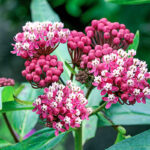
Spring flowers that are dangerous to dogs and cats
Of course, with the emergence of spring comes the radiance of beautiful flowers! However, as you live with the hope of seeing different shades of colorful petals, you equally need to be careful of the dangers that may be associated with these plants, if you’re a pet lover.
There are a lot of poisonous plants for dogs and cats, and since pets naturally love digging under plants, the flowers of these plants may be dangerous for them. In this blog, we shall briefly discuss some of the top plants you should avoid planting in your garden due to the risk and potential danger they may pose to your pets.
According to the ASPCA Animal Poison Control Center, listed below, are a few of the most common plants that are dangerous and poisonous to dogs and cats:
Sago Palms

The Sago Palms (often called “Cycads, Macrozamia and Zamia spp”) are usually found outdoors as ornamental plants at warm climes and as houseplants in colder climates. It’s a very dangerous plant. Due to its toxicity, its ingestion can cause liver damage, liver failure, hemorrhagic gastroenteritis, vomiting, and death.
Every part of the plant is toxic, with the seed having the highest level of toxins. The ingestion of one or two seeds could cause serious clinical signs and symptoms in your pets. It has a mortality rate of up to 50 percent.
Lilies

Although there is every possibility that you get tempted to decorate your home with a bouquet of lilies, doing that may spell doom for your cat. To prevent this, you need to protect your pet from the various species of the lily family available. These may include Easter lilies (L. longiflorum), Tiger lilies (L. tigrinum), and Japanese show lilies (L. speciosum). The smallest exposure of your cat to these plants may result in vomiting, lethargy, low blood pressure, seizure, irregular heartbeat, or coma.
Daffodil

Usually called narcissus spp., (also known as jonquils and paperwhites) this plant is often one of the first to bloom when spring arrives. It readily contains lycorine and other alkaloids, which may be poisonous to dogs and cats. The plant’s bulb has most of the toxins stored and, if eaten, could lead to intestinal spasms, salivation, vomiting, and diarrhea. If the amount eaten is much, it could also lead to irregular heartbeats, convulsions, and low blood pressure.
Tulips

The tulips (Liliaceae spp.) is another plant whose toxins are highly concentrated in the bulbs. Tulips are a very popular flower to have around the Easter holiday. You should be careful not to keep this plant in your garden if you have dogs or cats as pets. Toxicity in tulips may cause symptoms such as vomiting, diarrhea, and excessive drooling.
Milkweed

The milkweed, often known as Asclepias, has a lot of species cultivated as ornamentals. If you are an owner of pets, you should avoid cultivating this plant because of the dangers it can bring to them. For instance, upon ingestion, your dog may have difficulty breathing or show other symptoms such as dilated pupils, weak pulse, kidney or liver failure, which may eventually lead to death.
Conclusion
With raring pets, come responsibilities. Part of being responsible for them is to be extra vigilant on the kinds of plants you bring into the home or plant within the surroundings. However, suppose you’ve taken these precautions but still suspect any of the above symptoms. In that case, your pet may have ingested a toxic plant, and you need to contact your veterinarian as soon as possible.